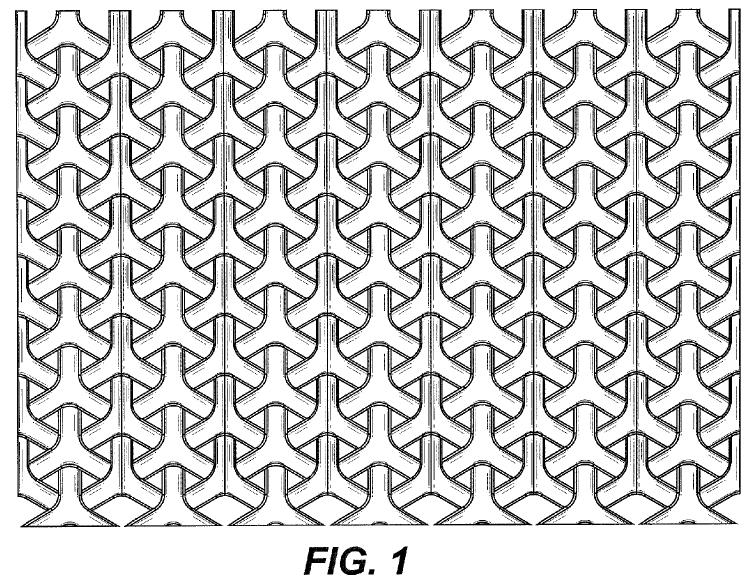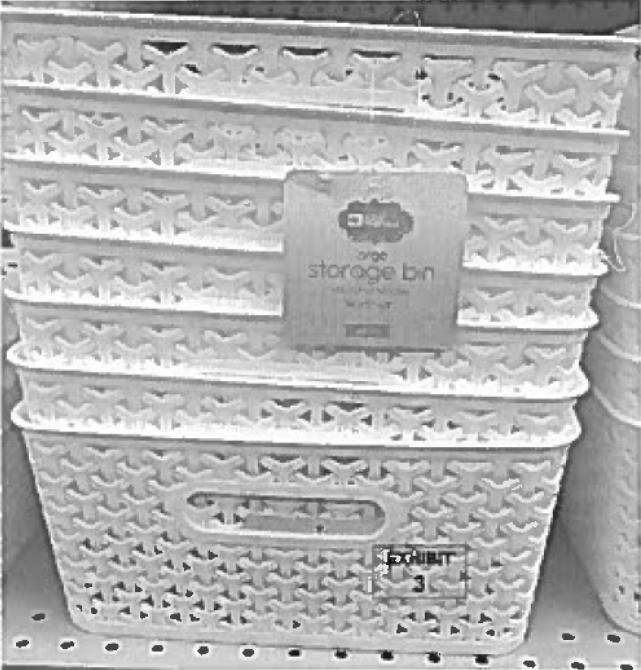On September 12, 2019, the Court of Appeals for the Federal Circuit affirmed a district court’s dismissal under Rule 12(b)(6) of a design patent infringement case using the title and claim to limit the claimed design to a chair, while the allegedly infringing item was a storage bin or basket.
In Curver Luxembourg, SARL v. Home Expressions Inc., No. 2018-2214 (Fed. Cir.), the Federal Circuit held that U.S. Design Patent No. D677,946 (’946 patent), entitled “Pattern for a Chair” and claiming an “ornamental design for a pattern for a chair” is limited to the illustrated pattern applied to a chair. FIG. 1 from the ’946 patent depicts an overlapping ‘Y’ design:

None of the figures of the ’946 patent illustrate the design being applied to a chair. The original application claimed a “design for a furniture part” and was entitled “design for a FURNITURE PART.” Citing MPEP § 1503(I), which requires that the title must designate a “particular article” for the design, the examiner found that the title was too vague and recommended changing the title and description to “Pattern for a Chair.” The applicant, Cuver, adopted these changes.
Cuver filed an infringement suit against Home Expressions for selling basket products with an overlapping ‘Y’ design similar to that in the ’946 patent, as shown below:

The Federal Circuit affirmed the scope of the design patent is limited to the “article of manufacture” described in the patent, i.e., a chair. Applying the ordinary observer testi, the Federal Circuit also affirmed that an ordinary observer would not purchase Home Expression’s basket thinking it was Cuver’s chair, even if the overlapping ‘Y’ design is similar. The court noted that the figures show the claimed design in the abstract by failing to illustrate the claimed design applied to any particular article of manufacture, including chairs, while the title and the claim of the design patent specified that the design patent is directed to a “pattern for a chair.” Accordingly, the court refused to interpret a design patent in a manner that resulted in extending protection beyond a chair, in effect, to surface ornamentation in the abstract.
To reconcile this holding with the long-established rule that the drawings of a design patent define the scope of the claim, not the language, the court noted that none of those cases involved drawings that failed to depict an article of manufacture for the ornamental design. In concluding, the court held that the language specifying an article of manufacture can limit the scope of a design patent, even if that article of manufacture is not actually illustrated in the figures. The court based its decision on the long-established premise and practice that design patents are only granted for designs as applied to an article of manufacture, that the Patent Office will not grant design patents for disembodied designs, and that 37 C.F.R. § 1.153(a) provides that design patent claims “shall be in formal terms to the ornamental design for the article (specifying name) as shown, or as shown and described.” (Emphasis added).
While the decision is arguably limited to a situation where a design patent’s figures fail to disclose an article of manufacture, it is possible that a court could find some middle ground where the figures are vague, or disclose multiple articles of manufacture, and the court looks to the title and the claim language to limit the article of manufacture of a design patent claim. Going forward, strategies may include specifying various articles of manufacture to apply a claimed design in a single application or filing multiple applications for each article of manufacture having the claimed design describing the article in the claim language and title. Alternatively, or in conjunction with the foregoing strategies, one may want to use as broad of description of the article of manufacture in the title, claim language, and figures while providing a definition for the broad description in the specification.
i In affirming the District Court’s dismissal of Cuver’s infringement claims under Rule 12(b)(6), the Federal Circuit affirmed that as held in Egyptian Goddess, Inc. v. Swisa, Inc., 543 F.3d 665, 672 (Fed. Cir. 2008) the “ordinary observer test” as defined in Gorham Co. v. White, 81 U.S. 511, 528 (1871) is the sole test for determining infringement of design patents. Under the “ordinary observer” test, an accused product infringes a design patent if it “in the eye of an ordinary observer … two designs are substantially the same,” such that “the resemblance is such as to deceive such an observer, inducing him to purchase one supposing it to be the other ….” Gorham, 81 U.S. at 528; Egyptian Goddess, 543 F.3d at 672.





 />i
/>i
